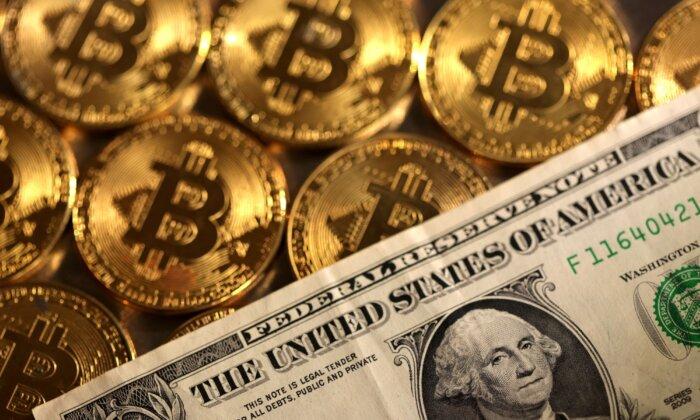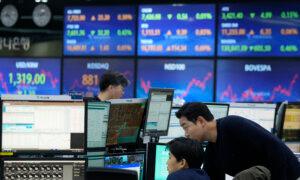LONDON—The dollar edged lower on Thursday as traders waited for U.S. inflation data to confirm whether bets on as many as five Fed interest rate cuts this year were justified, while weak Japanese wages data sent the yen to a six-week low against the euro.
Bitcoin neared $47,000, trading close to a two-year high, with investors welcoming the much-anticipated U.S. approval of spot bitcoin exchange-traded funds.
The approval opens the way for institutional buying and had been priced in over recent months, driving the cryptocurrency up 70 percent since mid-October.
The main event for the currency market on Thursday is monthly U.S. consumer inflation, which economists expected to have slowed again in December.
The dollar has slid in recent weeks, as investors have become increasingly convinced the Federal Reserve could start cutting rates as early as March—an expectation many in the market see as excessive.
“It’s a bit like an errant school child runs away with itself and gets carried away and needs to be reined in as the data comes out,” CMC Markets chief markets strategist Michael Hewson said.
“For me, the market is thinking way too far ahead. Yes, rate cuts are coming, that is pretty much a given. But do I really think the Fed is going to cut rates in March, unless there is a problem in the banking sector or the commercial real estate sector in the United States? Then, they might be compelled to do something like that.”
Rate-Cut Fever
The futures market shows investors expect 140 basis points (bps) of cuts this year with a two-thirds chance they will begin as soon as March, leaving prices sensitive to data surprises.“In the end, in our view, markets remain too aggressive around interest rate cuts expectations,” Julien Lafargue, chief market strategist at Barclays Private Bank, said.
“While an upside surprise to the December CPI may not be enough to change this perception, it could be a first step in allowing markets to align with the Fed’s narrative that cuts will come, but not just yet,” Mr. Lafargue said.
U.S. core inflation is seen at 0.3 percent for the month and 3.8 percent year-on-year for December, its slowest since early 2021.
After gaining sharply on Wednesday the dollar fell 0.23 percent to 145.45 yen, though the Japanese currency struck a six-week low of 160 per euro overnight.
Data on Wednesday showed Japanese workers’ real wages shrank for a 20th straight month in November —confounding officials’ wishes to see wage gains before tightening policy.
In Europe, the euro rose 0.1 percent to $1.0978, while sterling rose 0.2 percent to $1.2761.
Bank of England Governor Andrew Bailey, addressing lawmakers on Wednesday, said he did not want to comment on the outlook for monetary policy “but let’s just take the market for a moment—obviously that is feeding through into mortgage costs and I hope that is something that continues.”
The softer dollar helped China’s yuan off a one-month trough to 7.169 per dollar.
South Korea’s central bank kept interest rates unchanged for an eighth consecutive meeting, as expected, leaving the won stronger at 1,312.9 per dollar.







